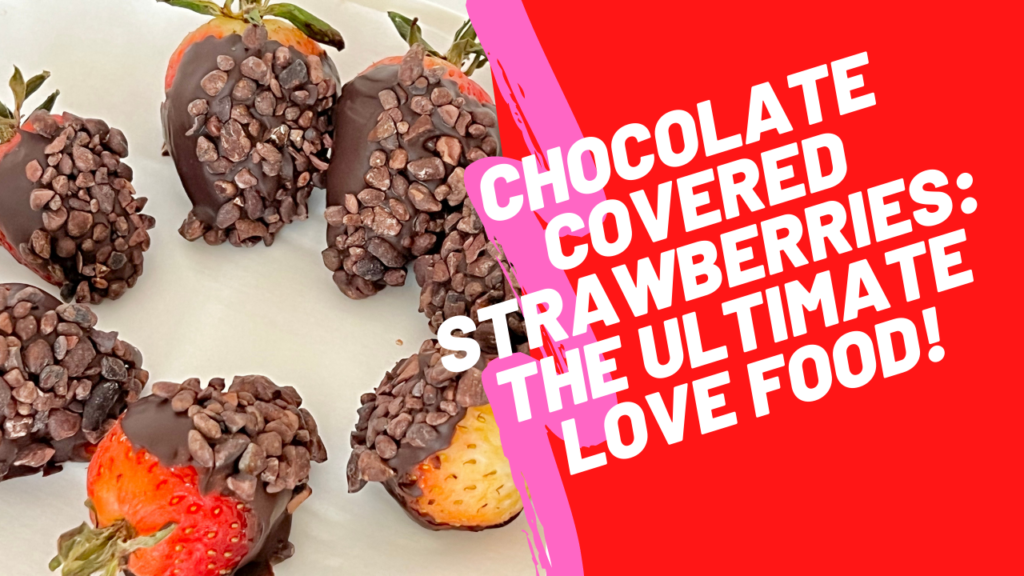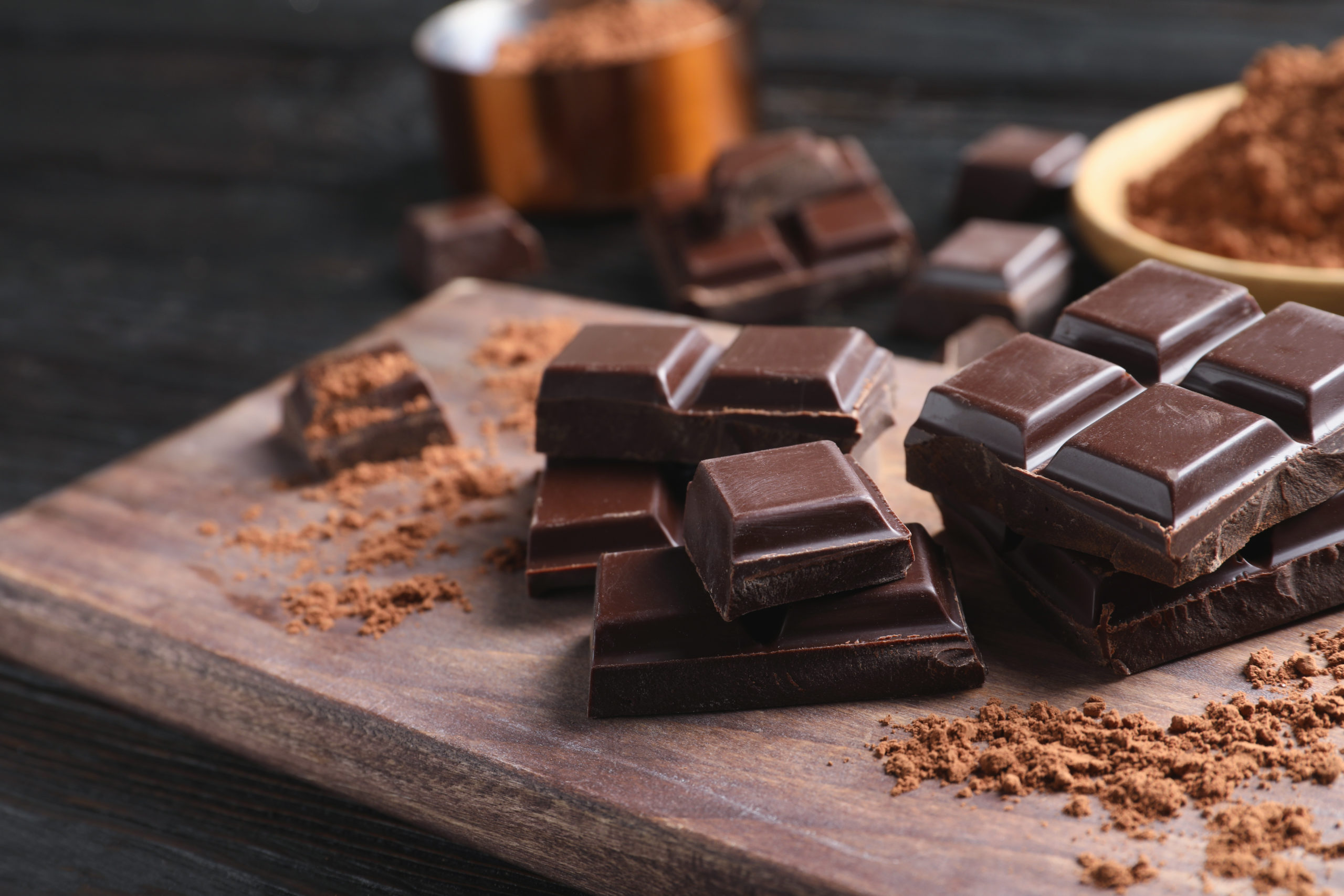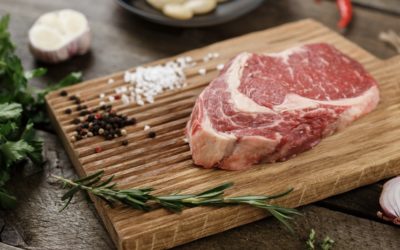The health benefits of chocolate come from its phytonutrients called flavonoids. Flavonoids are naturally found in many plant-based foods, including chocolate, tea, and red wine. Flavonoids offer many health benefits, including acting as antioxidants, preventing heart disease, dampening inflammation, supporting the immune system, and being strong cancer fighters. The darker the chocolate, the higher the concentration of flavonoids. The healthiest varieties of chocolate are those that are 85% or more dark chocolate, as milk chocolate has less cocoa and more fat and sugar to balance out the bitterness of chocolate.
Flavonoids are said to improve mood and memory.
Cocoa, the source of chocolate, is one of the foods that contains the highest amounts of flavonoids. According to an article in Harvard Health Publishing, flavonoids are good for the brain because they “reduce cell-damaging free radical” formation, prevent the build-up of beta-amyloid plaque, and increase blood flow (to the brain and everywhere else). Beta-amyloid plaque forms when cells in the brain become “sticky” and clump together, similar to the way fats stick together blocking arteries. This beta-amyloid formation is a hallmark of Alzheimer’s Disease. A recent study showed those who had the highest intake of flavonoids had a lower risk of developing cognitive decline over those who had the lowest intake.
Another study found that flavonoids from cocoa “improve general cognition, attention, processing speed, and working memory.” In fact, the researchers found that flavonoids were particularly important in areas that involved learning and memory. Flavonoids don’t just enhance the ability to think, they are also neuroprotective against damage to brain cells in these areas.
Chocolate, or more correctly the cocoa in chocolate, also contains a non-protein derived amino acid called L-theanine. L-Theanine has many beneficial properties including boosting the immune system, acting as an antioxidant and antistressor, protecting the liver, fighting inflammation, it’s antimicrobial, antiaging, and decreasing anxiety. It also decreases lipids and blood pressure, improves attention and memory, and most importantly, it has antitumor properties. If you’re not a fan of chocolate (shame!), you can find L-theanine in tea as well.
What’s love got to do with it?
When we think of Valentine’s Day we think of the people we love. When we think of love, here in the US, we think of flowers and chocolates. This is not by mistake.
Dubbed the “Love Hormone”, oxytocin is not only released during childbirth, bonding a mother to her child, it is released when we cuddle, have sex, interact with animals, and when we eat. The release of oxytocin goes directly to the brain, the gut, and into circulation. Though it’s not well understood, oxytocin has the ability to regulate eating behavior and metabolism.
Some of the many jobs of oxytocin are to regulate food intake, balance glucose, body weight, energy expenditure, and lipid (fat) metabolism. Oxytocin is released when we eat, first through touch receptors in the mouth and later in the gut via release of the satiety-related hormone, cholecystokinin (CCK) released in response to consumption of protein and fat.
The act of eating is followed by a period of “postprandial sedation,” a sense of peace and calm from the satisfaction of the meal and wellbeing received from it. Sharing food with family and friends heightens the feeling of enjoyment. Preparing meals together strengthens the bonds of the relationship by spending time together both while preparing and consuming the meal.
Certain foods trigger neurotransmitters involved in feeling happy – endorphins, dopamine, serotonin, and oxytocin. This is why we love our comfort foods! Comfort foods remind us of the familiar and things that bring us, well,… comfort and joy.
Since oxytocin is activated by eating fat (and protein), oxytocin is released when we eat chocolate. Again, giving us those good, happy feelings.
Where does chocolate come from?
What we know as chocolate comes from a tree called Theobroma cacao. There are four varieties of this tree grown in different areas of Central and South America, the Caribbean, Brazil, Africa, and Peru. Like wine grapes, each tree produces pods of different aromas and flavors of cacao bean depending on where they are grown.
The cacao pods are harvested from the trees and then go through a multi-step process that involves fermentation, drying, roasting, winnowing (removing the shells around the bean), grinding, conching (finer grinding and addition of flavorings), blending, and tempering. Each stage is meant to bring out more of the deeper, richer flavor and consistency we love and expect in our favorite chocolate.
We don’t usually think of it, but chocolate contains a small amount of protein. One of the more prominent amino acids (protein building block) being tryptophan. You may think this is a familiar, indeed, it is the same amino acid found in turkey and the reason we feel so relaxed after eating a Thanksgiving meal (which usually involves sizable quantities of turkey). The fermentation process is when this amino acid is concentrated. This could be one reason why you may feel more relaxed after eating chocolate.
Quality and uses of chocolate.
When it comes to chocolate, quality is everything. The way to know your chocolate is to look at the ingredients. It should start with cocoa powder or cocoa liquor, and most will include cocoa butter and sugar. Cocoa liquor is the product of the first stage of processing not to be confused with liqueur made from chocolate. As I mentioned earlier, it is to tamp down the bitterness of pure chocolate.
You can also tell if it’s the real deal when you break off a piece. Good dark chocolate will snap with a crisp clean sound. Milk chocolate will bend because of its higher milk content. And white chocolate… is not chocolate. White chocolate is made from cocoa butter, milk, and sugar. Pretty to look at, but devoid of most of its health benefits.
And though chocolate is delicious and has so many health benefits, it’s important to remember it is high in calories and can be high in sugar and so should be eaten in moderation as a flavor enhancer.
Here are the classes of chocolate you need to know:
- Unsweetened chocolate – pure, ground, roasted chocolate; bitter or baking chocolate.
- Dark chocolate – made without the addition of milk; both the US and Europe have requirements pertaining to the quantity of cocoa solids it contains.
- Milk chocolate – contains milk and requires less concentration of cocoa solids.
- White chocolate – contains cocoa butter and sugar; cocoa solids have been removed.
- Semisweet chocolate – dark chocolate with sugar added; used in cooking.
- Bittersweet chocolate – has more cocoa and less sugar than semisweet, also contains more cocoa butter. Used in cooking.
- Couverture – chocolate with a high concentration of cocoa butter, used for cooking by professional chefs.
- Cocoa powder – primarily of two varieties: natural and Dutch-process. Both are created by removing the fat (cocoa butter) from the cocoa solids.
- Natural cocoa powder is lighter in color, has a stronger chocolate flavor, is more acidic than Dutch-process, and used as an alkali (like baking soda). When used with baking soda it helps baked goods rise.
- Dutch-process powder has a darker color but milder flavor. Alkali is added to it to make it less acidic. Also used in baking where a milder flavor is desired.

Check out this dessert I made combining semisweet chocolate and strawberries here.
Further Reading:
- Saeed M, Khan MS, Kamboh AA, et al. L-theanine: an astounding sui generis amino acid in poultry nutrition. Poult Sci. 2020;99(11):5625-5636. doi:10.1016/j.psj.2020.07.016
- Socci V, Tempesta D, Giovambattista D, et al. Enhancing Human Cognition with Cocoa Flavonoids. Front. Nutr., 16 May 2017 | doi:10.3389/fnut.2017.00019
- https://www.scienceofcooking.com/chocolate/how-is-chocolate-made.htm
- Barišić V, Kopjar M, Jozinović A, et al. The Chemistry behind Chocolate Production. Molecules. 2019;24(17):3163. Published 2019 Aug 30. doi:10.3390/molecules24173163
- https://www.scienceofcooking.com/chocolate/all-about-chocolate.htm
- Uvnäs-Moberg K, Handlin L, Petersson M. Self-soothing behaviors with particular reference to oxytocin release induced by non-noxious sensory stimulation. Front Psychol. 2015;5:1529. Published 2015 Jan 12. doi:10.3389/fpsyg.2014.01529
- Lawson EA. The effects of oxytocin on eating behaviour and metabolism in humans. Nat Rev Endocrinol. 2017;13(12):700-709. doi:10.1038/nrendo.2017.115









